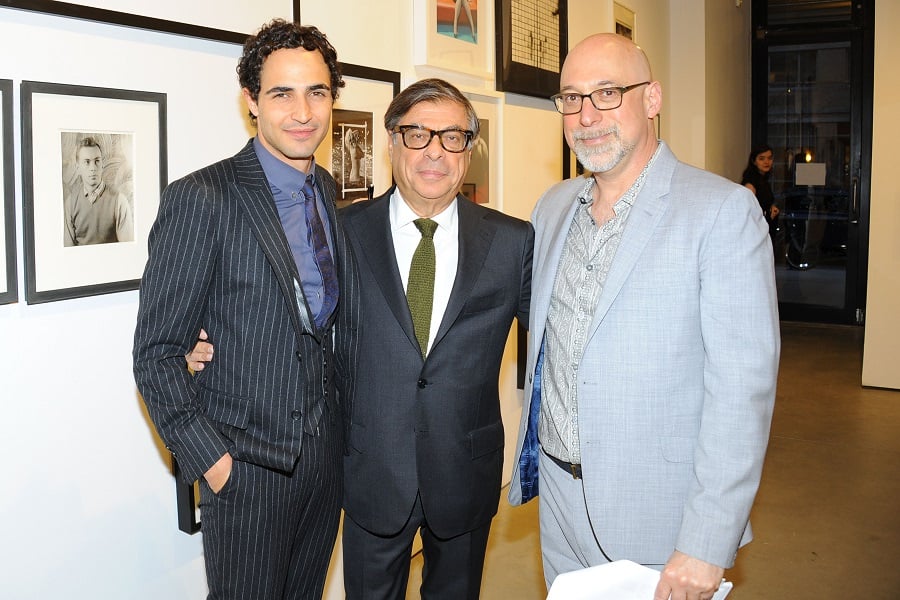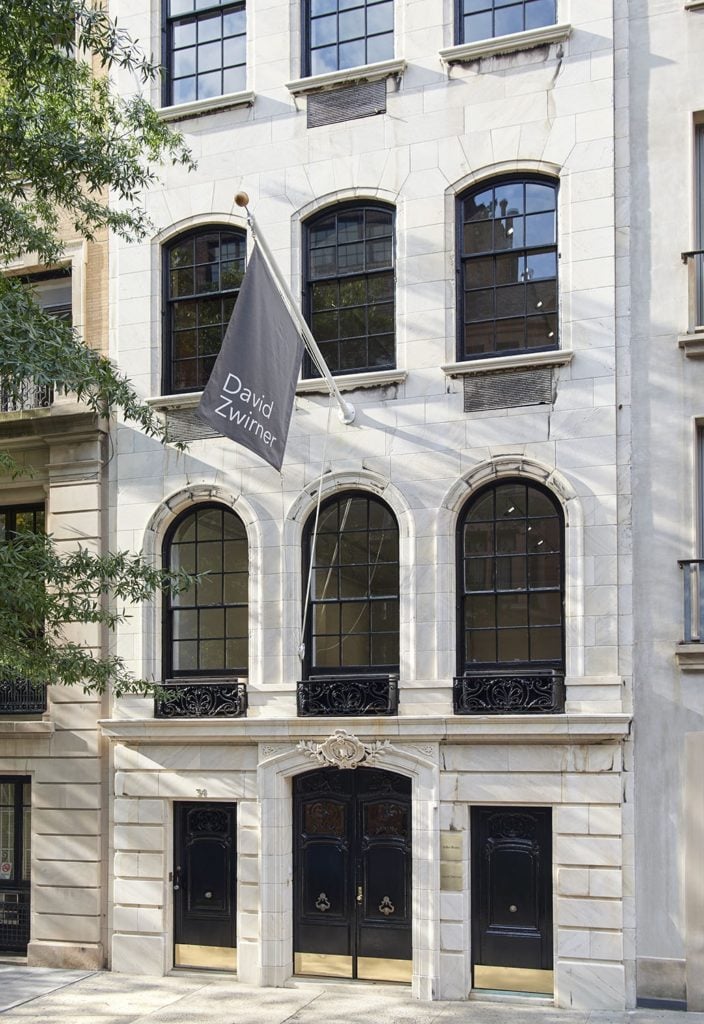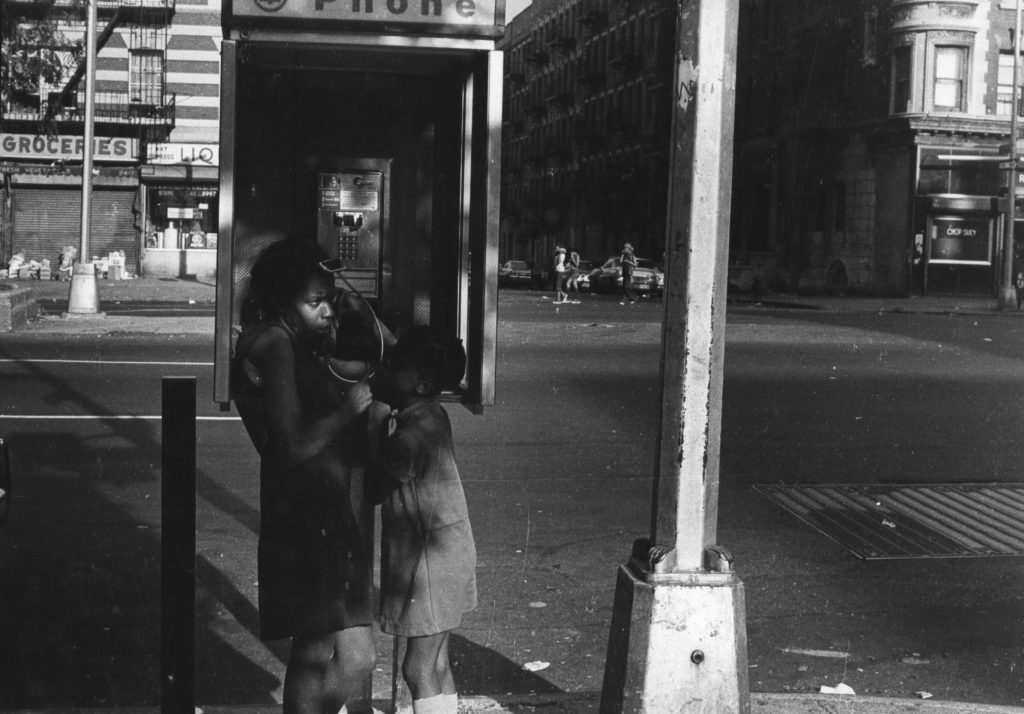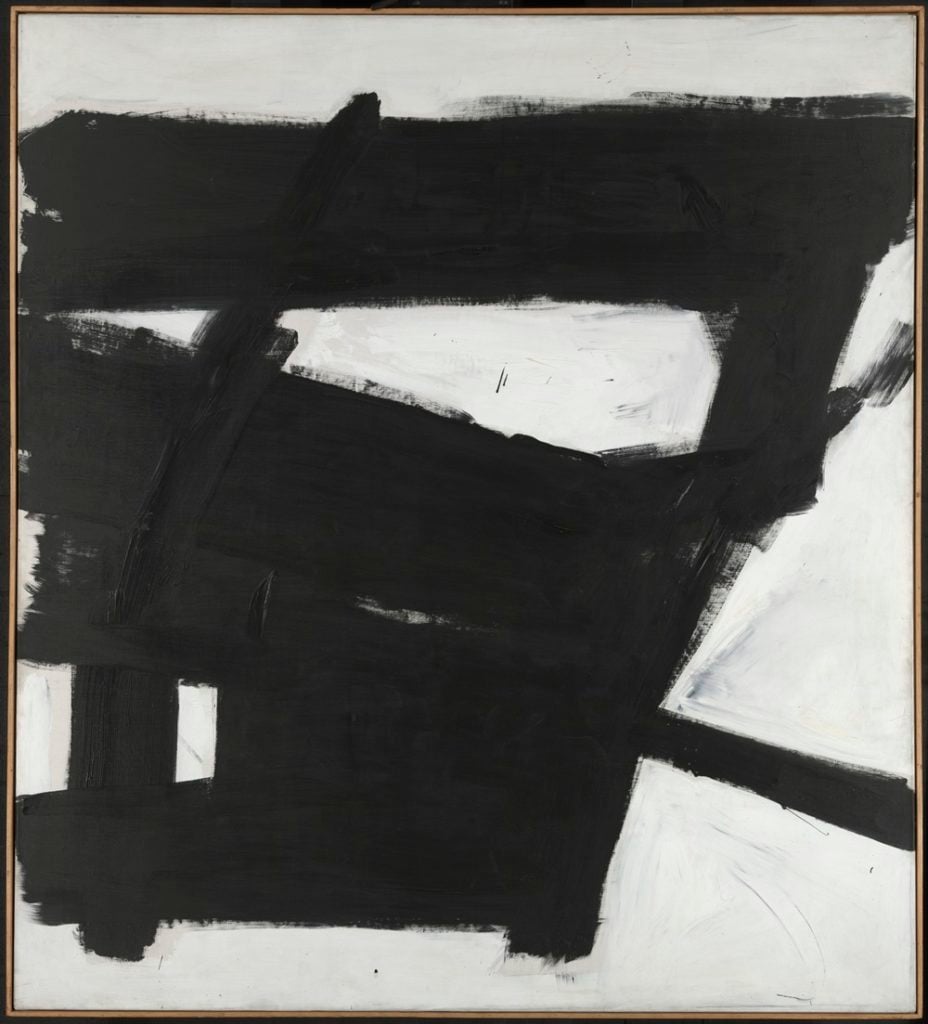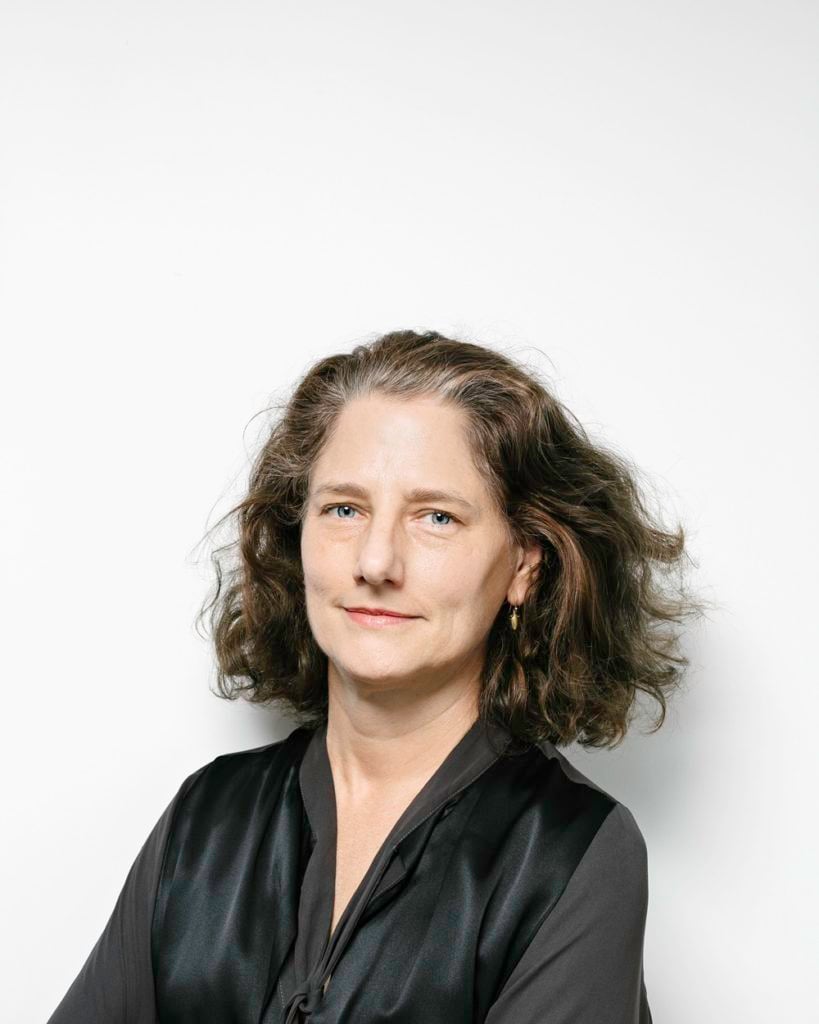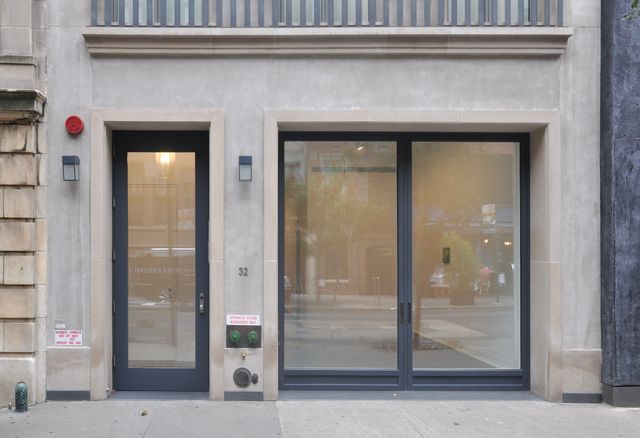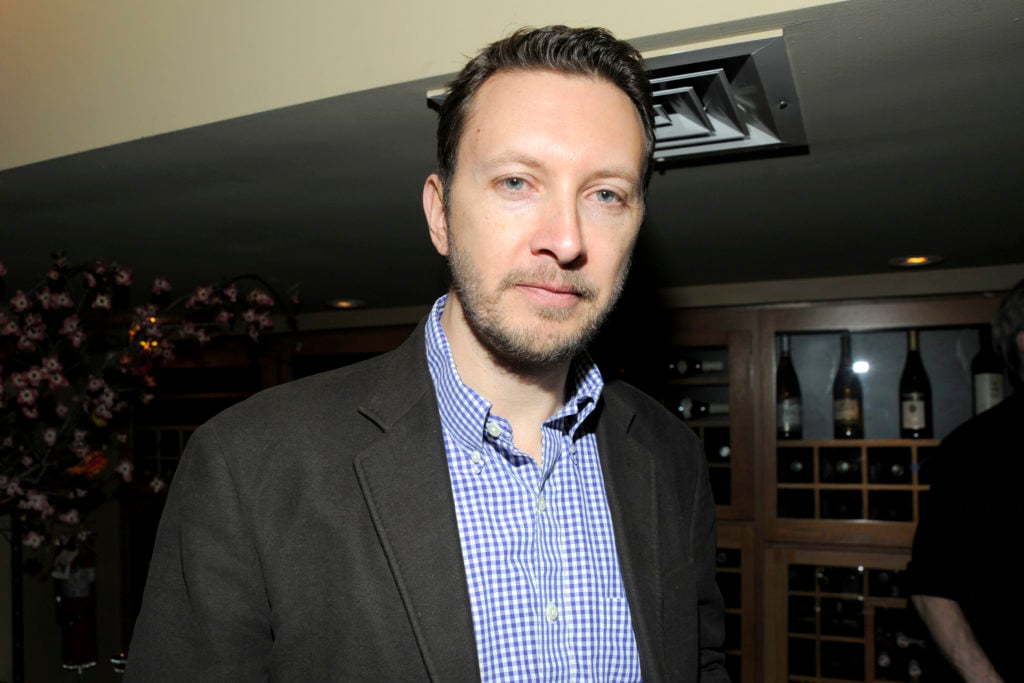Art Market
The Risks of Using Auction Prices as Artworks’ Fair Market Value
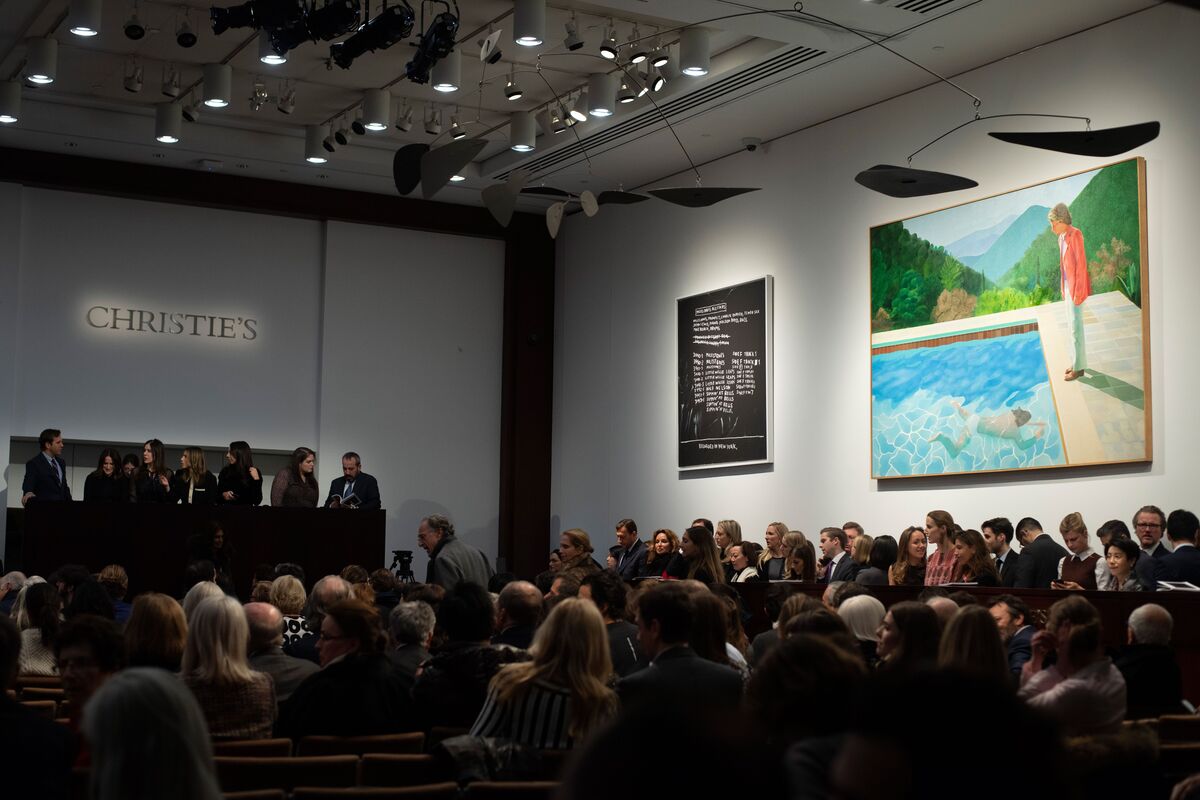
Photo by DON EMMERT/AFP/Getty Images.
One interesting trend across the past several cycles of major auctions has been the new forms of stagecraft used by auction houses in order to draw attention and publicity to star lots, with the aim of enhancing their value. Last November’s sale of
’s Salvator Mundi (ca. 1500) is a spectacular case in point, as is the semi-shredding of
’s Girl with Balloon (2006) this October: an act intended to critique the commercialization of Banksy’s work, but one that apparently malfunctioned halfway, curiously preserving the specimen relatively intact, and significantly enhancing both its market value and the value of Banksy’s works in general. Bravo!
The recent sale of
’s Portrait of an Artist (Pool with Two Figures) (1972) also generated mounds of publicity for the very public assertion that it would be sold with no guarantee (third-party or otherwise) and no reserve, virtually unheard of in a major auction. This high-wire gambit was further compounded by the sotto voce whisper campaign that the consignor (widely reported to be billionaire Joe Lewis) expected a price of $80 million for the work, and indeed rejected several third-party guarantees just below that threshold, apparently reflecting the consignor’s supreme confidence in his market acumen. The fact that the final hammer struck at exactly $80 million left many to wonder if some shenanigans were in effect. Kenny Schachter even speculated that the consignor could have bought the painting back himself.
However, I’d propose another purely speculative scenario—not because I have any reason to believe it is what actually took place, but rather because it brings forward an interesting question about the role that the public auction markets play as a measure of artworks’ fair market value. The Internal Revenue Service (IRS) defines fair market value as the price paid between a willing buyer and a willing seller, without external encumbrances and with a shared set of relevant facts. It views the price achieved for an artwork at auction (including buyer’s premium) as the fair market value benchmark for that artwork, because of the free determination of the public auction price.
Now, in my purely hypothetical scenario, imagine you own a major David Hockney oil-on-canvas, are very active in the secondary market, and have confidentially secured interest in a private sale of that work to another acquisitive collector in your very selective circle of art-world avatars. However, given the thin trading history of Hockney above $10 million, and the fact the $80 million price tag you expect for the work would exceed the artist’s auction record by several multiples, the potential buyer remains skittish and unconvinced of the sale, without the additional public enshrinement that a sale at auction would otherwise provide.
While most private sales are grounded on the promise of discretion and the anonymity afforded to both parties, in this scenario, publication of the higher-than-previously-established price and the promise of a fair market valuation of the work are conditions central to the buyer’s interests. If she acquired it privately for the undisclosed price of $80 million, and then reoffered it 10 or 15 years later without another public market comparable, she might find the market would only support a price of $60 million. She would therefore prefer the public precedent of an auction sale to establish that price as a foundation on whatever enhancement value might accrue later. Indeed, it is a staple of arts journalism to cite the prior auction price for works when reoffered as a purported measure of inflation and relative return.
As such, the consignor might agree to place the Hockney at auction on the (gentleman’s?) agreement that the prospective private buyer will bid up to the $80 million limit. In doing so, the consignor would also negotiate that a hefty portion of the buyer’s fees, which typically go to the auction house, be included in their take (what’s called a “hammer bonus” in the trade) in order to reduce their transactional costs. In this scenario, a proxy underbidder could then be secured by the seller to ensure that a limit bid is placed one increment below the agreed target price.
Finally, in order to flush out any prospective third parties, the buyer and proxy underbidder could agree to raise the price at minimal increments of, say, $100,000 in the final run up to $80 million, as any alternative bidder waiting in the wings would likely step in to short-circuit these minimal raises. In the absence of a third-party bidder, however, the two parties could control the increase to the agreed target price.
In such a scenario, we have in effect a “first-party” guarantee, in the sense that the consignor secures a guaranteed bid price from an independent party, and then secures a proxy underbidder to elevate the auction to just that price level. Certainly, another bidder could still step in to outbid that figure, but the buyer would then have confidence that they have viable market demand for a future resale, if they chose to go higher.
Of course, I have no indication that such a scenario occurred in this recent case, and it is perfectly conceivable that two bidders independently and autonomously settled on a target price, one of at least $80 million and the other of precisely $79.9 million. Any similarity to real persons and events is entirely coincidental.
Nevertheless, this purely hypothetical scenario underscores the way that public auction results could be manipulated, thereby distorting a work’s fair market value. Although my fictional scenario may sound outlandish, analogous schemes are hardly uncommon: It is widely understood, for example, that dealers will often bid on the artists they represent at auction to prop up their prices; they have even been known to acquire works back in this manner, in order to establish a floor for their retail prices. Certain consortiums of owners of works by prominent artists have also been known to actively bid up artists they own in bulk, in an effort to inflate prices in future sales by establishing a precedent.
My hypothetical scenario might also not technically be illegal (the consignor did not directly bid on their own property, after all), but it could be construed as an inverted form of old-fashioned collusion. As I discuss in my recent book on deaccessions, the legendary
dealer Julius Weitzner exposed the ancient practice in 1968 when he bought an unrecognized
at a country auction in England, by first securing a ring of other dealers to not bid against him, and thus reduce the hammer price. In the current hypothetical, however, the collusion is designed to inflate the price to an agreed level in order to establish a floor or benchmark for future buyers to measure against, to the extent that market participants at large generally have confidence that such prices are a true and unadulterated benchmark of fair market value.
It thus may be time that we bring some skepticism to the “fairness” of current measures of fair market value.
Martin Gammon is the founder of Pergamon Art Group and the author of “Deaccessioning and its Discontents: A Critical History” (MIT Press, 2018).
The opinions expressed above are solely those of the author.

